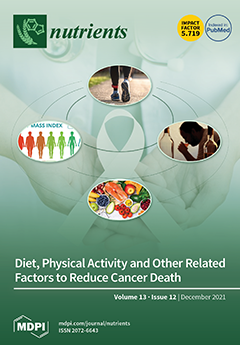Globally grown and organoleptically appreciated
Grewia species are known as sources of bioactive compounds that avert the risk of communicable and non-communicable diseases. Therefore, in recent years, the genus
Grewia has attracted increasing scientific attention. This is the first systematic review which focusses
[...] Read more.
Globally grown and organoleptically appreciated
Grewia species are known as sources of bioactive compounds that avert the risk of communicable and non-communicable diseases. Therefore, in recent years, the genus
Grewia has attracted increasing scientific attention. This is the first systematic review which focusses primarily on the nutritional composition, phytochemical profile, pharmacological properties, and disease preventative role of
Grewia species. The literature published from 1975 to 2021 was searched to retrieve relevant articles from databases such as Google Scholar, Scopus, PubMed, and Web of Science. Two independent reviewers carried out the screening, selection of articles, and data extraction. Of 815 references, 56 met our inclusion criteria.
G. asiatica and
G. optiva were the most frequently studied species. We found 167 chemical compounds from 12
Grewia species, allocated to 21 categories. Flavonoids represented 41.31% of the reported bioactive compounds, followed by protein and amino acids (10.7%), fats and fatty acids (9.58%), ash and minerals (6.58%), and non-flavonoid polyphenols (5.96%). Crude extracts, enriched with bioactive compounds, and isolated compounds from the
Grewia species show antioxidant, anticancer, anti-inflammatory, antidiabetic, hepatoprotective/radioprotective, immunomodulatory, and sedative hypnotic potential. Moreover, antimicrobial properties, improvement in learning and memory deficits, and effectiveness against neurodegenerative ailments are also described within the reviewed article. Nowadays, the side effects of some synthetic drugs and therapies, and bottlenecks in the drug development pathway have directed the attention of researchers and pharmaceutical industries towards the development of new products that are safe, cost-effective, and readily available. However, the application of the
Grewia species in pharmaceutical industries is still limited.
Full article






